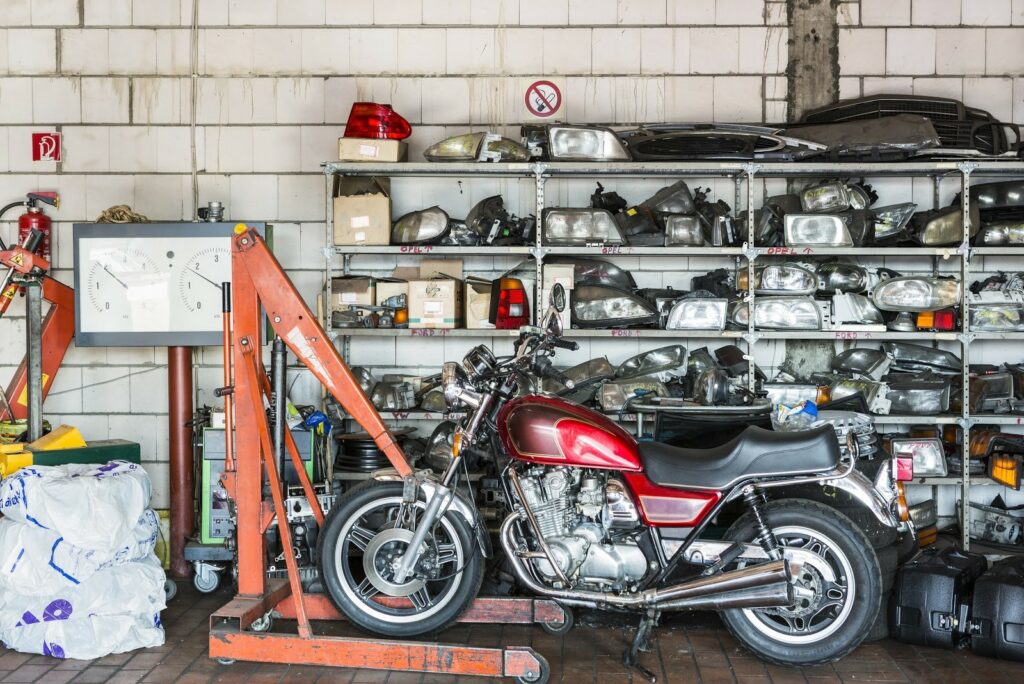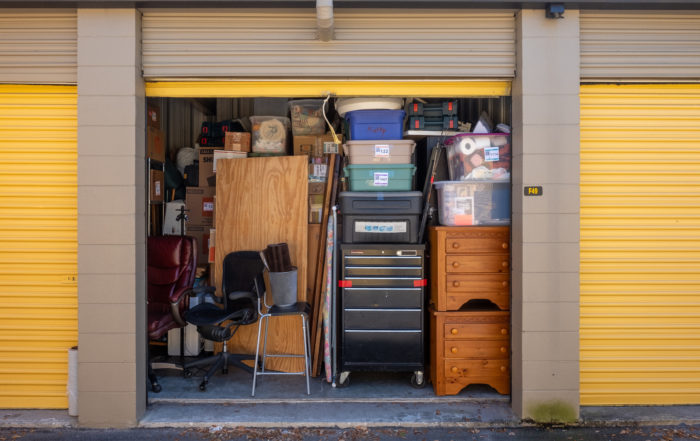A Complete Guide to Motorcycle Storage

Preparing your motorcycle for short-term or long-term storage is very different from prepping your car, boat or RV. Any length of inactivity can damage your bike, so be prepared and know exactly how long you’ll be leaving it in storage. Like with any vehicle, the key is to prevent it from oxidizing and breaking down.
If you don’t prepare your motorcycle, you run the risk of it rusting, of fuel separating and rubber components degrading and possibly cracking.
The biggest thing you need to know before you begin your preparations is how long you and your bike will be apart. There are typically three timelines to consider: short-term (up to two weeks), seasonal (up to three months) or indefinitely.
No matter how long you plan on leaving your bike in storage, ethanol in your gas tank can cause a problem if you don’t add a fuel stabilizer and conditioner. Without those components, you run the risk of the ethanol separating from the fuel and forming a thick gum-like substance in the internal systems of your bike. Alternatively, you can use pure gasoline to run your bike.
Short-term Storage
If you know you won’t be riding your bike for up to two weeks, you won’t be looking at much work. The first step is to clean your bike to prevent mildew and wax it to protect the paint. Using a rubber conditioner will help keep your wheels protected from the sun and dust during this time. Cover your bike too.
If possible, get both wheels off of the ground. The bike’s point of contact runs the risk of softening or eroding over long periods of inactivity, especially due to water runoff of high temperatures. This is typically not a huge risk for bikes left out for less than two weeks, though consider it if your bike is outside in the summer on pavement.
Your battery can stay in the bike and your fuel can remain topped off without the need of a stabilizer or ethanol-free gasoline.
This type of storage can be done in your secure parking lot, garage or driveway without much need for concern.
Seasonal Motorcycle Storage
If you’re looking to store your bike for the winter or for about 3-4 months, consider taking it out of your parking lot and garage to free up space. Albuquerque Self Storage has outdoor and indoor storage units that are ideal for your needs.
If long-term seasonal storage is your goal, then be sure you have a checklist ready so you can mark off what maintenance you’ve done on your bike. If you know you’ll have the itch to pull it out of storage temporarily and ride it, be sure you fit your bike with the appropriate seasonal tires and brakes.
Before putting your bike into storage, be sure its oil and filter have been changed and make sure the oil is topped off. No oil additives are required. Check all of your fluid levels as well: coolant, brake fluid, hydraulic systems all should be checked and changed if needed.
Add stabilizer to the fuel or drain the tank and top it off with pure, ethanol-free gasoline. You don’t need to empty your tank completely if you don’t want to.
Like with short-term storage, clean your bike and wax the paint and rubber to add a second layer of protection from the elements. Be sure its cover isn’t torn and completely hides the bike. This will protect it from the sun, rain or dust. Clean out your saddlebags too! Do not leave anything stored in the bike.
Take both wheels off the ground and reduce air pressure by the recommend amount in the bike’s manual. The common recommendation is to reduce air pressure by 20%, says New Touring Rider.
Consider removing the battery and checking it thoroughly. Some opt out of doing this and prefer to leave the battery in. While there is a low chance of this harming your bike, ensuring your battery won’t die can skip a step to a repair shop once you’re ready to ride it again. Check the battery fluid level and top it off. Low fluid causes sulfation and can short out the internal plates.
Some choose to hook their battery up to a trickle charger, but this is not always necessary, especially if your battery is fully charged.
If you have a maintenance-free battery, store it in a warm place and charge it periodically to keep its life long.
Indefinite Motorcycle Storage
If you don’t know how long your bike will be in storage, you can prepare it for an indefinite amount of time. This guide is for those who have no plans on riding for a long period of time.
Follow all of the long-term steps listed above. Instead of replacing the fuel and coolant, drain and purge it completely.
Lubricate your engine. You can try “fogging” your engine with oil mist, but this leaves gas in the system. Fogging is more suited for 2-cycle bikes. If you have a 4-cycle, pull the spark plugs and put in a few ounces of automatic transmission fluid. Cover the holes with rags and turn the engine over several times before putting the plugs back in. This helps prevent the cylinder walls from corroding and the rings from seizing.
Remove the battery, take both wheels off the ground (or off the bike if they’re nearing their five-year lifespan), and ensure the physical storage space is clean and secure so you don’t have to worry about your bike during this period of time.
Conclusion
The thought of storing your bike can be heartbreaking, but Albuquerque Self Storage can make the process easier. They offer drive-up indoor and outdoor units perfect for storing motorcycles. The facility is well-lit, fenced and has 24/7 security.
All of their units are rented on a monthly basis, so you can pick out the right timeline for your needs, whether it’s one month or one year. So when your bike is ready to hibernate, you can rest easy knowing it’s in a safe and affordable location at Albuquerque Self Storage. Contact them today.
Recent Posts
Understanding Self-Storage Lease Terms: What to Know Before You Sign
Renting a self-storage unit is often one of those tasks that feels simple at first—pick a unit, sign a lease, move your stuff in. But if you’re like most people, the fine print on that [...]
What Not to Do When Using a Self-Storage Unit: 9 Common Mistakes to Avoid
Self-storage units are a convenient and affordable way to store everything from furniture and keepsakes to business inventory and seasonal gear. Whether you’re moving, downsizing, or just trying to declutter your space, renting a storage [...]
How to Keep a Storage Unit Clean and Tidy
A self-storage unit can be a lifesaver when you need extra space, but without proper organization and upkeep, it can quickly become cluttered. A clean and tidy storage unit not only makes it easier to [...]



